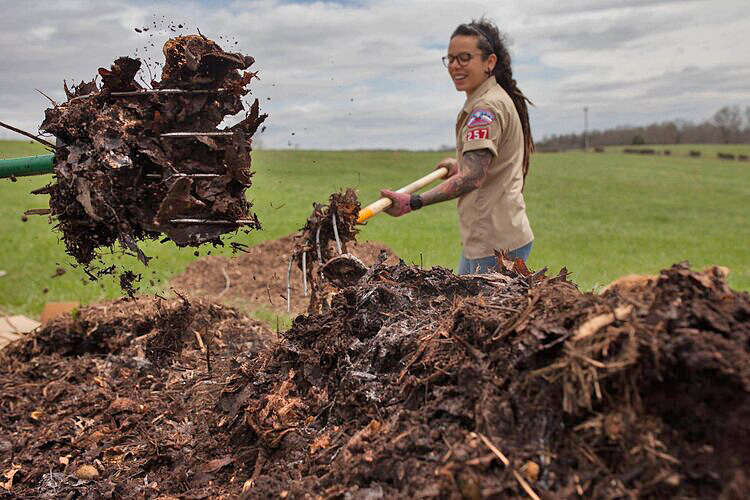Ever watch garbage turn into black gold? It’s nearly a miracle. But that’s exactly what happens when you use a home composter. The organic wastes you put in will, through a season of rain and warmth, turn into a rich, black compost that gardeners and plants love to sink their hands and roots into. Well-seasoned compost has great fertilizer value and soil structure enhancing properties. It is a very mild fertilizer compared to many chemical fertilizer products, which can “burn” plants. And a composter is easy to make. If you’re not inclined to make one yourself, there are many good models available for purchase.
There are only a few basic “rules” for composting:
- You have to be careful what you put into the composter. Just about any high organic content plant materials (vegetable scraps, leaves, grass) can go in, but you should never add any animal parts or materials —no bones, meat scraps, fats or grease.
- It is a good idea to think in terms of “green” and “brown” materials, with about a one-to-one ratio of each, or a slightly higher percentage of browns. Greens are cut grass, vegetable scraps, coffee grounds (worms love these), spent garden plants, cut off carrot and beet tops, etc. Browns are dried leaves, straw, wood chips, sawdust or even shredded newspapers. Put layers of browns down over greens to cut down on flies and odors. By using both browns and greens, the compost will have a good mix of nutrients and organic substances.
- Turning the wastes as they are composting speeds up aerobic decomposition and cuts down on odors by reducing anaerobic decomposition. Many commercial composters feature handles on drums or barrels for easy turning and mixing. My compost is in a wooden bin, so I turn it occasionally with a shovel or pitchfork.
- Composting happens faster with higher moisture content. Plant materials typically have high water contents, so you don’t need to add much, but dry leaves and straw will soak up water. Compost in a closed container may need a little watering. My wooden compost bin is open to the air on top, therefore it receives regular rainfall. However, I may need to cover it temporarily if we’re getting too much rain.
- If you use an open top composter, like mine, it’s best to have a sturdy screen securely latched or wired in place to prevent opossums, raccoons and the like from getting into it.
It’s really fun to watch the compost over time, as it steady morphs from recognizable plant parts into rich, deep black soil. Some might say it’s almost as fun as watching paint dry. But in the early spring, when I’m digging out the finished product and applying it to my raised garden beds, I feel a real since of accomplishment—making my own soil, to keep my tomatoes and beets—and me while I’m eating them—happy long into the summer and fall.
Loring


